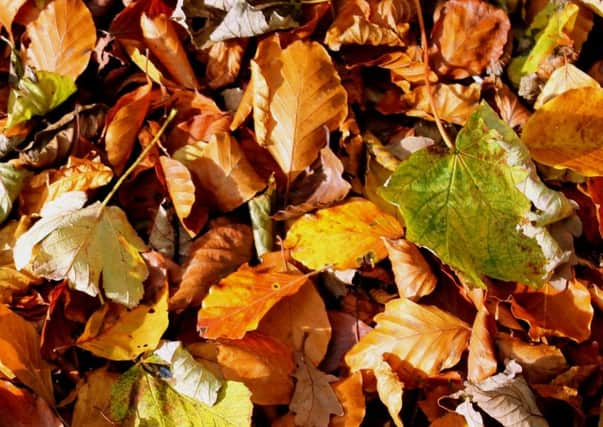Eats shoots and leaves


This year, November seems to have arrived several weeks early. The dry summer (forget about August) seems to have persuaded many trees to shed their leaves early, and the result is the battle to save the lawn.
Some mowers will collect leaves fairly efficiently, chopping them up as they go along. If the bits are small enough and mixed with plenty of grass cuttings, they should rot down easily over the next few months when mixed with ordinary kitchen waste (not food!) on the compost heap.
Advertisement
Hide AdAdvertisement
Hide AdBut if you’re a boy with a toy, and like to spend hours chasing leaves with a mechanical blower, you’re likely to have so many to get rid of that it pays to forget about composting and start thinking about making leafmould.
Wet the leaves, then stick the whole lot into a black plastic compost bag.
Seal it, pop a few holes in it so the leaves don’t turn into a slimy mess, and pop the bag outside, in a shady, sheltered spot, for a year or so.
If you’ve done the job right, when you next open the bag it will be filled with lovely, earthy leafmould ideal for adding to compost or for mulching the soil.
Advertisement
Hide AdAdvertisement
Hide AdAlternatively, make yourself a chickenwire container and store the fallen leaves in that. It may take 18 months for the magic to happen, but they, too, should eventually turn into leafmould.
But while all that fermenting is going on, once the lawn is clear of fallen leaves, check to see if any hollows have developed, then lift the turf (cut on three sides and lift it like a flap) pop some well-riddled compost underneath until everything looks level, and put the turf back down.
Tread it down (gently) and leave it to get on with preparing for winter.
A quick scarifying will help remove all the thatch which has accumulated over the year and, finally, any soggy spots can be treated by aerating – use a hollow-tine tool or, more simple, a garden fork to spike the affected area.
You can then brush some more of that well-riddled compost into the holes to improve drainage.